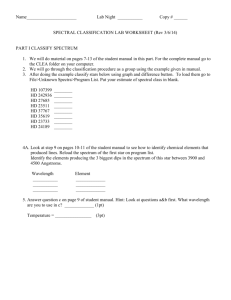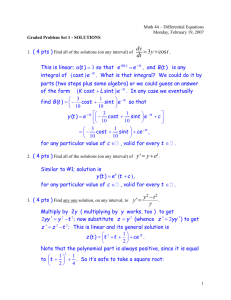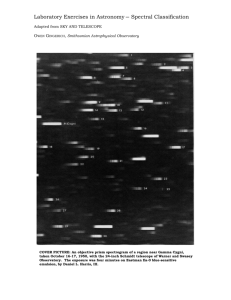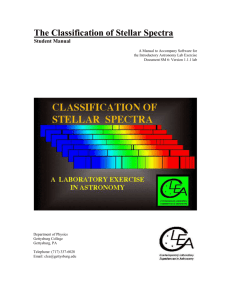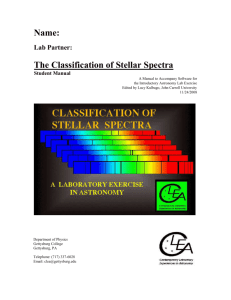light & atoms
advertisement
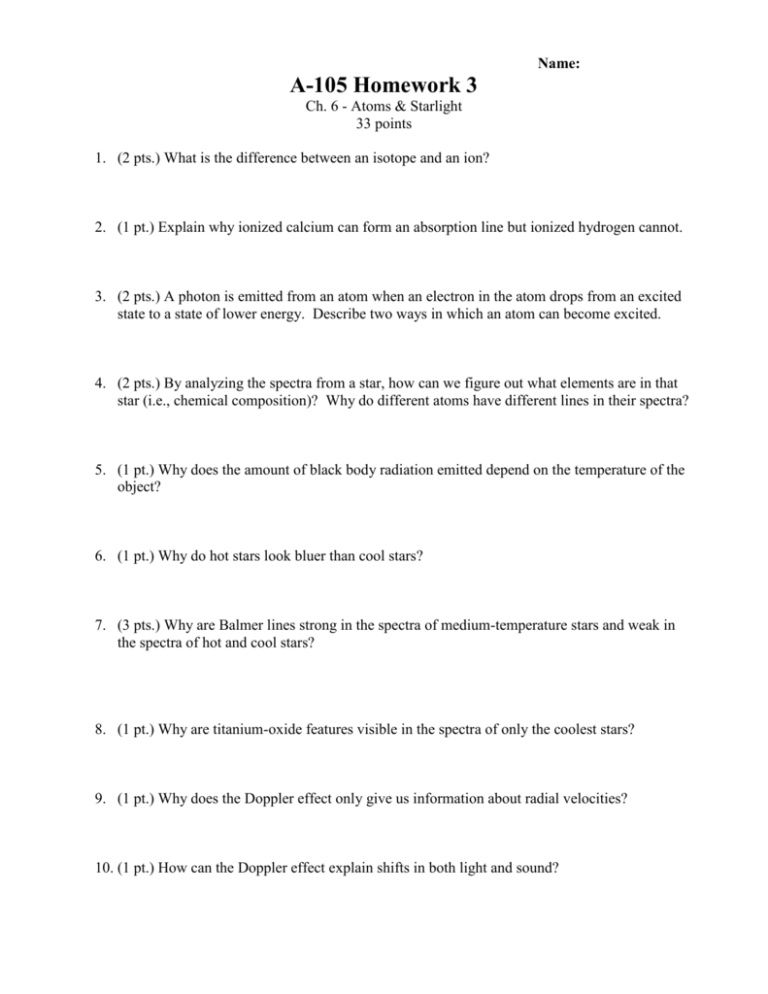
Name: A-105 Homework 3 Ch. 6 - Atoms & Starlight 33 points 1. (2 pts.) What is the difference between an isotope and an ion? 2. (1 pt.) Explain why ionized calcium can form an absorption line but ionized hydrogen cannot. 3. (2 pts.) A photon is emitted from an atom when an electron in the atom drops from an excited state to a state of lower energy. Describe two ways in which an atom can become excited. 4. (2 pts.) By analyzing the spectra from a star, how can we figure out what elements are in that star (i.e., chemical composition)? Why do different atoms have different lines in their spectra? 5. (1 pt.) Why does the amount of black body radiation emitted depend on the temperature of the object? 6. (1 pt.) Why do hot stars look bluer than cool stars? 7. (3 pts.) Why are Balmer lines strong in the spectra of medium-temperature stars and weak in the spectra of hot and cool stars? 8. (1 pt.) Why are titanium-oxide features visible in the spectra of only the coolest stars? 9. (1 pt.) Why does the Doppler effect only give us information about radial velocities? 10. (1 pt.) How can the Doppler effect explain shifts in both light and sound? 11. (2 pts.) Explain why the presence of spectral lines of a given element in the solar spectrum tells you that element is present in the sun, but the absence of the lines would not meant that the element was absent from the sun. 12. (2 pts.) The human body temperature is about 310 K ( 98.6 F). At what wavelength do humans radiate the most energy? What kind of radiation do we emit (i.e., what part of the electromagnetic spectrum)? 13. (4 pts.) A star has a surface temperature of 5,800 K. At what wavelength will it radiate the most energy? What about a star that has a surface temperature of 20,000 K? What part of the E-M spectrum are these in? 14. (2 pts.) What are the spectral classes of the two stars of the previous problem? 15. (3 pts.) A star radiates the most energy at a wavelength of 400 nm. What surface temperature does this correspond to? What is most likely the spectral class of this star? 16. (1 pt.) If you double the temperature of a black body, by what factor will the total energy radiated per second per square meter increase? 17. (2 pts.) What is the total energy radiated per second per square meter of our sun (5800 K)? The surface area of the sun can be calculated using A 4 R 2 . What is the luminosity (total energy radiated in one second) of the sun? (See Appendix A to find the radius of the sun ( R ).) 18. (2 pts.) In a laboratory, the Balmer beta line has a wavelength of 486.1 nm. If the line appears in a star’s spectrum at 486.3 nm, what is the star’s radial velocity? Is it approaching or receding?


